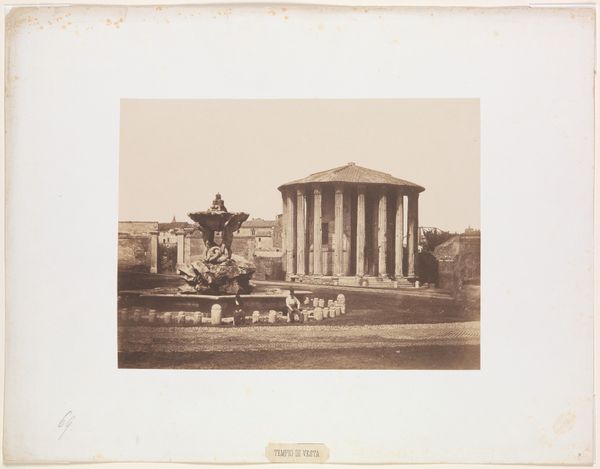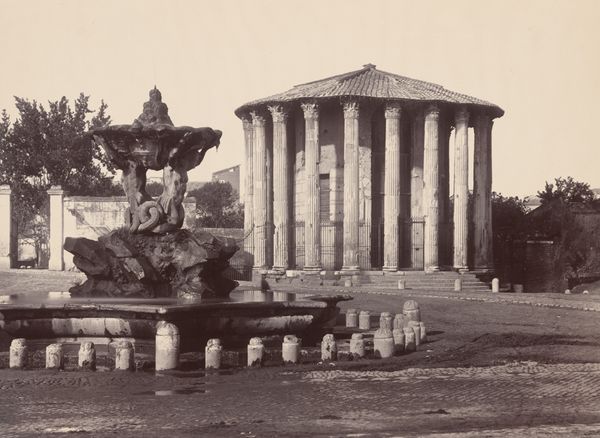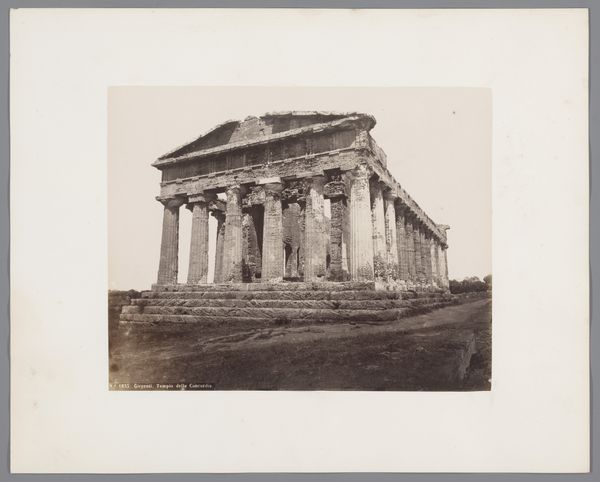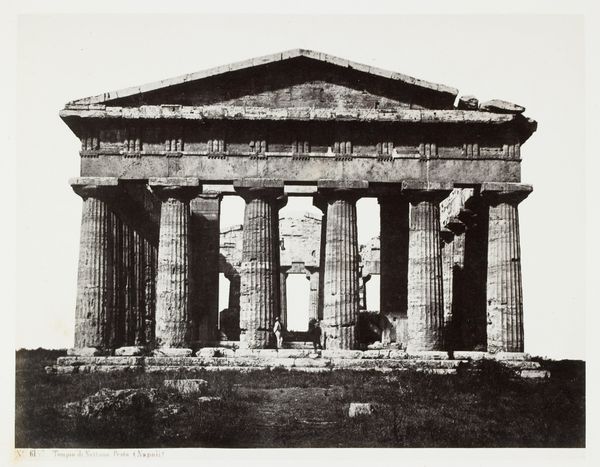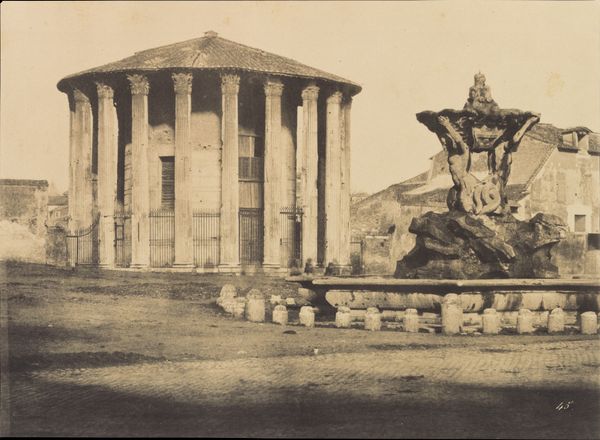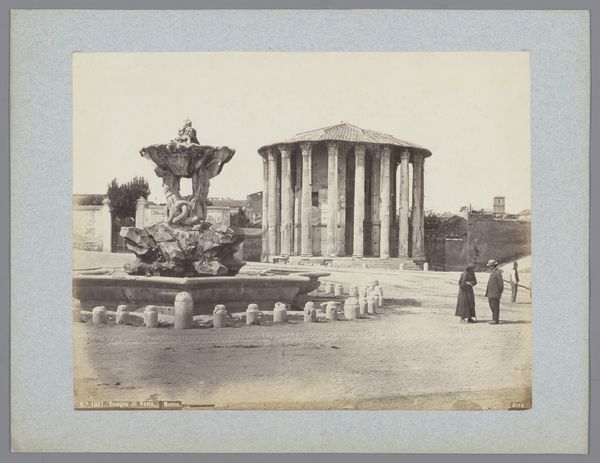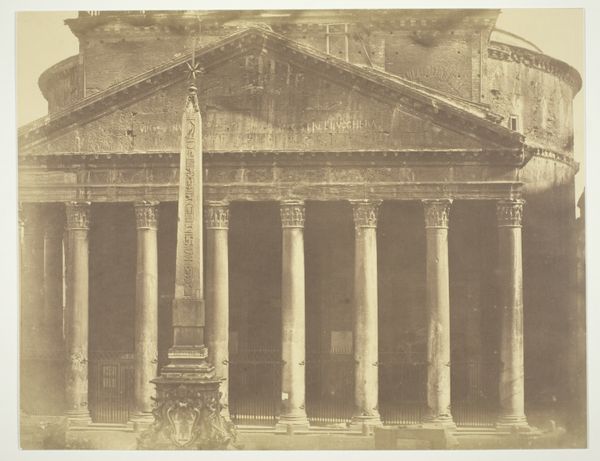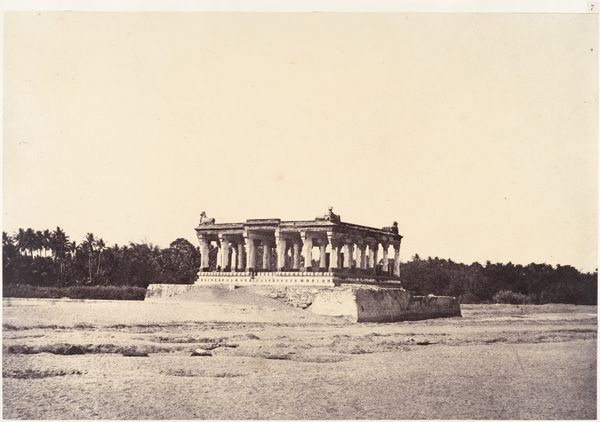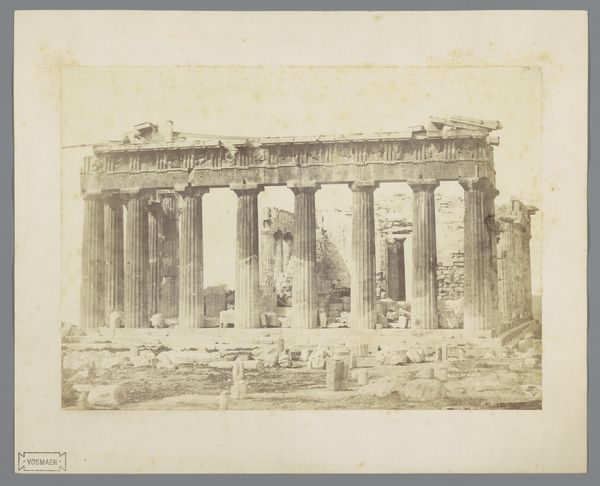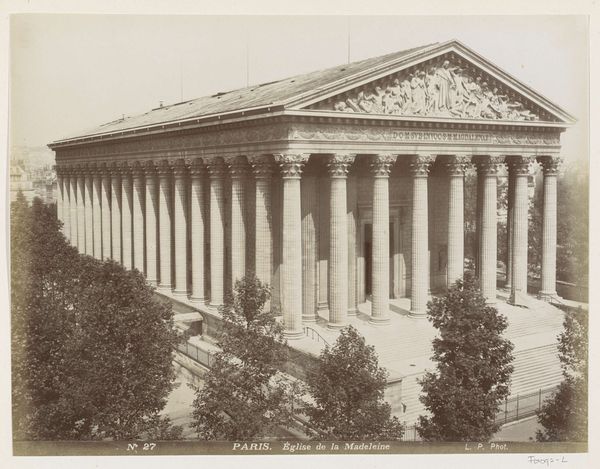
photography, albumen-print, architecture
#
landscape
#
classical-realism
#
archive photography
#
photography
#
historical photography
#
ancient-mediterranean
#
19th century
#
albumen-print
#
architecture
Dimensions: Image: 6 5/16 × 8 7/16 in. (16 × 21.5 cm) Sheet: 12 1/8 × 18 1/2 in. (30.8 × 47 cm)
Copyright: Public Domain
Editor: This albumen print, "Tempio di Vesta" by Eugène Constant, made sometime between 1848 and 1852, really has a timeless quality. It feels so still and grand, almost like a stage set. What kind of stories do you think it's trying to tell? Curator: Ah, what a perfectly staged, and yet stark, scene, calling up centuries of veneration, erasure, and rediscovery. Notice how the light renders the temple as a beacon of civilization. Even as a photograph from the mid-19th century, it already invokes the idea of "historical photography," freezing a specific understanding of classical grandeur in time. Editor: You're right, there's that immediate connection to a grand past. And that fountain in the foreground, so ornate – is it competing with the temple, or complementing it? Curator: I would suggest neither! It depends on whether you feel that the photographer's careful orchestration seeks harmony. The fountain almost appears as a vulgar intrusion, a baroque embellishment against severe Doric architecture. Perhaps it hints at layers of appropriation, one culture building atop another, obscuring and reimagining the original intent? Editor: So, like Rome itself, constantly being rebuilt and re-interpreted. The picture, in a way, becomes a symbol of time itself! Curator: Precisely! And doesn't it make you consider what we choose to preserve, how we frame it, and what gets lost in translation? It raises an interesting question about memory and visual rhetoric, doesn't it? Editor: It certainly does. I never thought a photograph could be so packed with historical and cultural meaning. This has definitely opened my eyes. Curator: Indeed, these seemingly simple images hold cultural memory. Examining them reveals not just what was, but also how we choose to remember it.
Comments
No comments
Be the first to comment and join the conversation on the ultimate creative platform.

